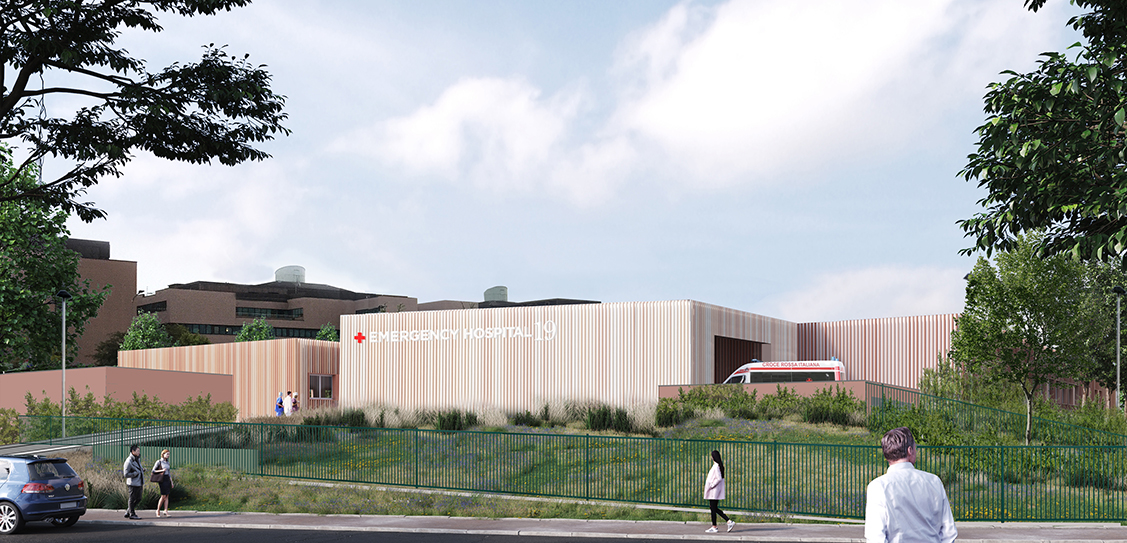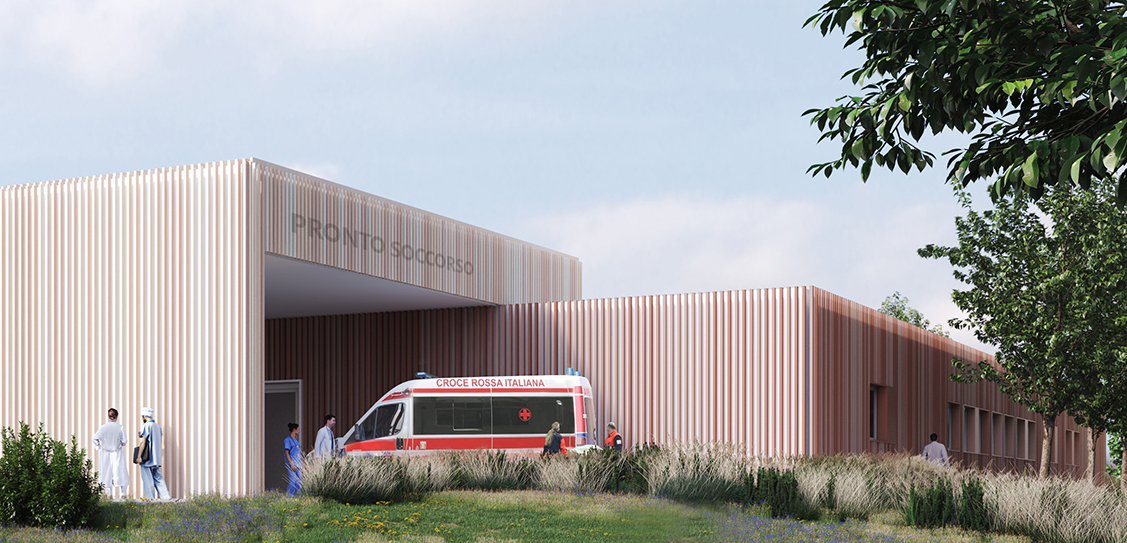Emergency Hospital 19 is a project developed by Humanitas, with the engineering and design support of Techint and architect Filippo Taidelli for the management and containment of infectious diseases within hospital facilities. A project in which architecture, medicine and engineering contribute to defining spaces for management and care, efficient, sustainable and with a human face.
Not just a concept, but a pilot project and a new model for managing healthcare emergencies with the aim of providing quality, safety and efficiency spaces.
By separating patient pathways, the facility will guarantee continuity of care and assistance to patients with other pathologies, in total safety.
Emergency Hospital 19 is Humanitas's response to the need to be ready to manage the critical aspects of an emergency and normal healthcare at the same time; versatile, universally adaptable architecture, achievable in just three months, that starting from a modular structure can grow without constraints, be adapted to and integrated with the pre-existing context and have its spaces customised.
The construction of Emergency Hospital 19 next to the current Emergency Room in just eleven weeks was made possible because of contributions from Intesa Sanpaolo to the Istituto Clinico Humanitas and from Tenaris Dalmine and Fondazione Rocca to the Humanitas Foundation for Research, responsible for the scientific development of the project.
Emergency Hospital 19 is the first of three facilities dedicated to emergency care currently being built in the Northern Italy; Bergamo and Castellanza.
Wards and intensive therapy units have large windows that allow the patient to benefit from natural light and a view of the landscape. The rooms are defended against the risk of glaring sun or overheating by the presence of Venetian blinds and silkscreens beyond the window.
In an emergency situation, the patient can often spend more than 10 days in a hospital ward, in small spaces that sometimes do not allow the presence of other furniture except a bed, which becomes a couch, dining room and sofa. In this habitat, the finish of the inner enclosure helps to infuse serenity and tranquillity into the patient.
In the Emergency Hospital 19 project the multicoloured pastel striped wallpaper in rooms and corridors breaks up the monotony and continuity between spaces, as if projecting the patient into a carefree open-air atmosphere and helping him to feel less lost or oppressed. The floors, which simulate a seamless wooden deck, and the warm light fixtures (3000k) also help to create a more enveloping atmosphere. These devices are designed to recreate domestic sensations of serenity and well being, supporting the patient's delicate psychophysical balance.
Emergency Hospital 19 responds to an extended sustainability principle; technical, social, energetic and environmental. The basic module has been developed to be energetically autonomous, as well as adaptable to latitude and context.
The building enclosure has been designed to reduce incoming thermal energy by up to 50%, thus reducing the energy required by the interior air conditioning.
Green areas are an essential part of the project; they contribute to mitigating the climate of the enclosure, become an integral part of flow management, in a context where social distancing is a preventive measure, and a therapeutic instrument for patients and healthcare workers.
The façade also acts as a climate mitigator of the enclosure, to contain solar radiation, increase user comfort and reduce the energy required for the operation of air conditioning systems.
The second skin that covers the basic module is adaptable to different formal requirements and consists of two main elements: skin and edges.The skin is a sequence of vertical slats in coloured aluminium which, with the changing point of view, modify the perception of the elevation, creating kinetic effects like those of Rafael Soto’s dynamic installations. Slat colours can be combined in a variety of percentages on the different facades: colours in the same shades but with variable intensity make the visual impact on the volumes dynamic and changeable.



